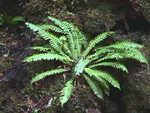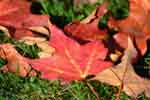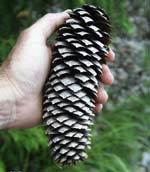|
  FOREST FOREST |
 |
|
PLANTS
& MORE |

|
|
|
|
|
 |
| |
 |
|
::: STUDY
Stuff
::: |
|
 |
TROPICAL
RAIN FOREST
Within the rain forest, tall trees sketch skyward
toward the sunlight. The trees in the tropical rain
forest are broadleaf evergreens, which keep their
leafs year-round. Their foliage forms a dense, green,
tangled canopy of leaves that almost entirely blocks
out the sun from the forest floor. Where there are
gaps in the canopy, for example, along the side
of a river, light reaches the ground. The result
is a heavy undergrowth of twisting vines.
|
|
 |
MID-LATITUDE
FOREST
The dominant trees in the forest of the Mid-latitudes
are deciduous. That is, they shed their leaves during
one season, usually autumn. These forests look dramatically
different depending on the season - bare in the
winter and lush and green in the summer. In some
parts of the world, the broad leaves of these trees
- such as birches, oaks, and maples- turn brilliant
colors before they fall.
|
|
 |
CONIFEROUS
FOREST
Pines, spruces, firs, and their relatives have long,
thin "needles" rather than broad, flat
leaves. Needle leaves expose only a small surface
to the cold and so can remain on the tree in winter
without freezing. As a result, these needle leaf
trees are "evergreen," using whatever
sunlight is available throughout the year.
|
|
 |
TEMPERATE
FORESTS
Some small areas of the world have unique forest
vegetation. In most places, however, forest regions
overlap. A mixed region has coniferous and broadleaf
deciduous trees growing together in the same area.
|
|
 |
CHAPARRAL
The chaparral includes small evergreen trees and
low bushes. Chaparral is a Spanish word meaning
"an area of small evergreen oak trees."
Many chaparral plants have leathery leaves to hold
moisture over the dry summer.
|
|
| |
|
|
 |
| |
|
::: SEE Stuff
::: |
 |
Can
you believe this cone is specially adapted to protect
the trees seeds during the long, cold winters? |
|
|
 |
|
|
 |
 |
|